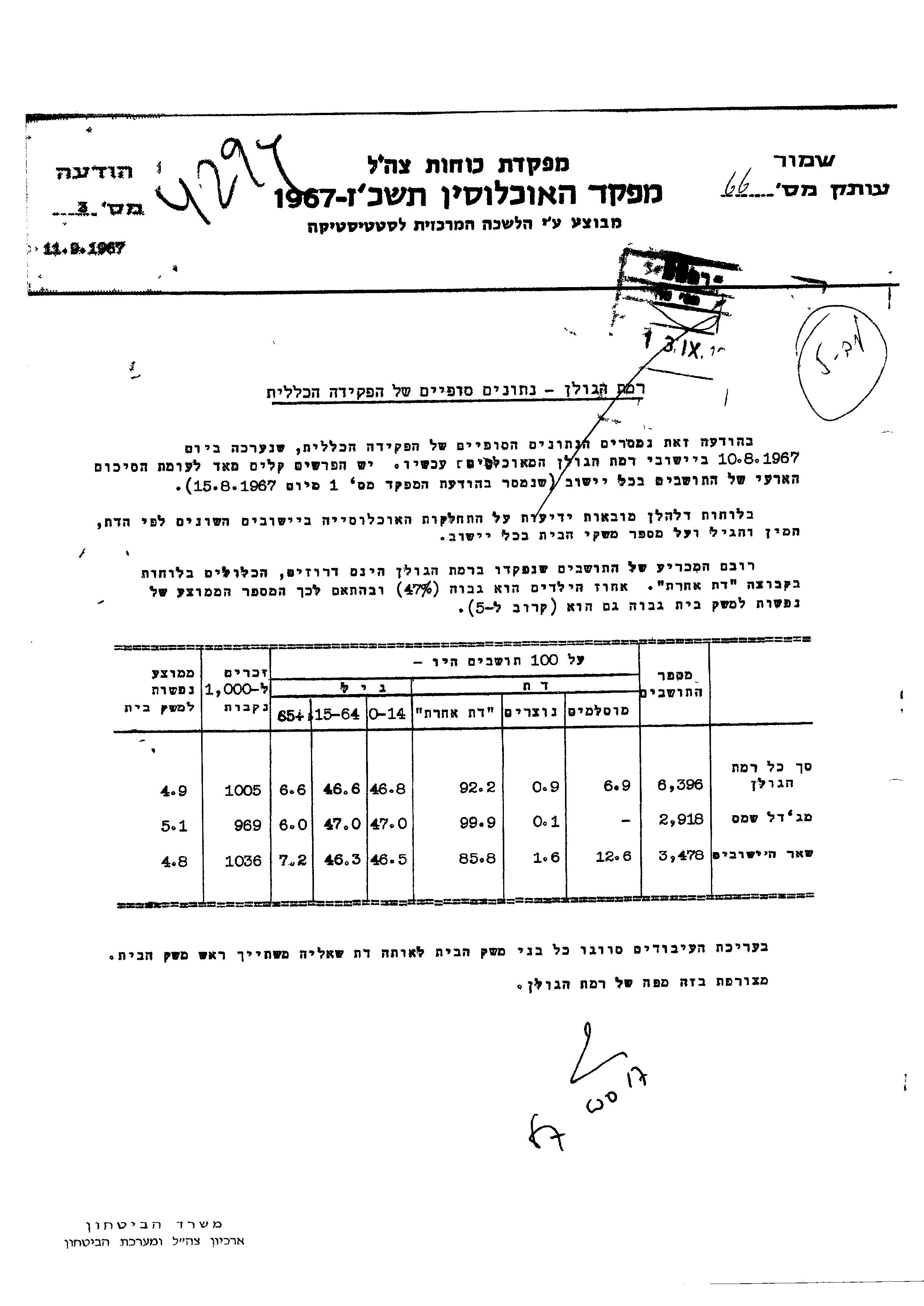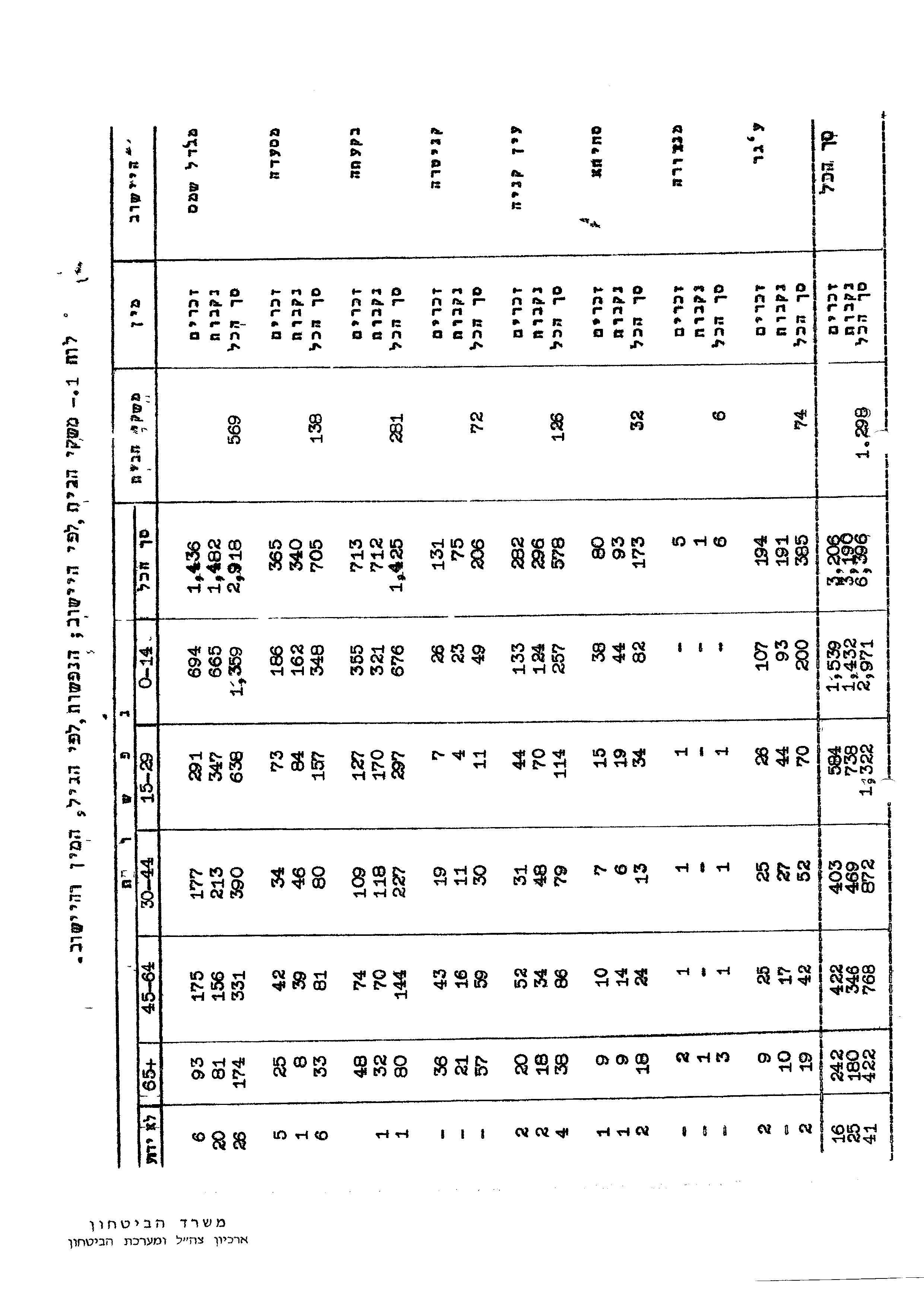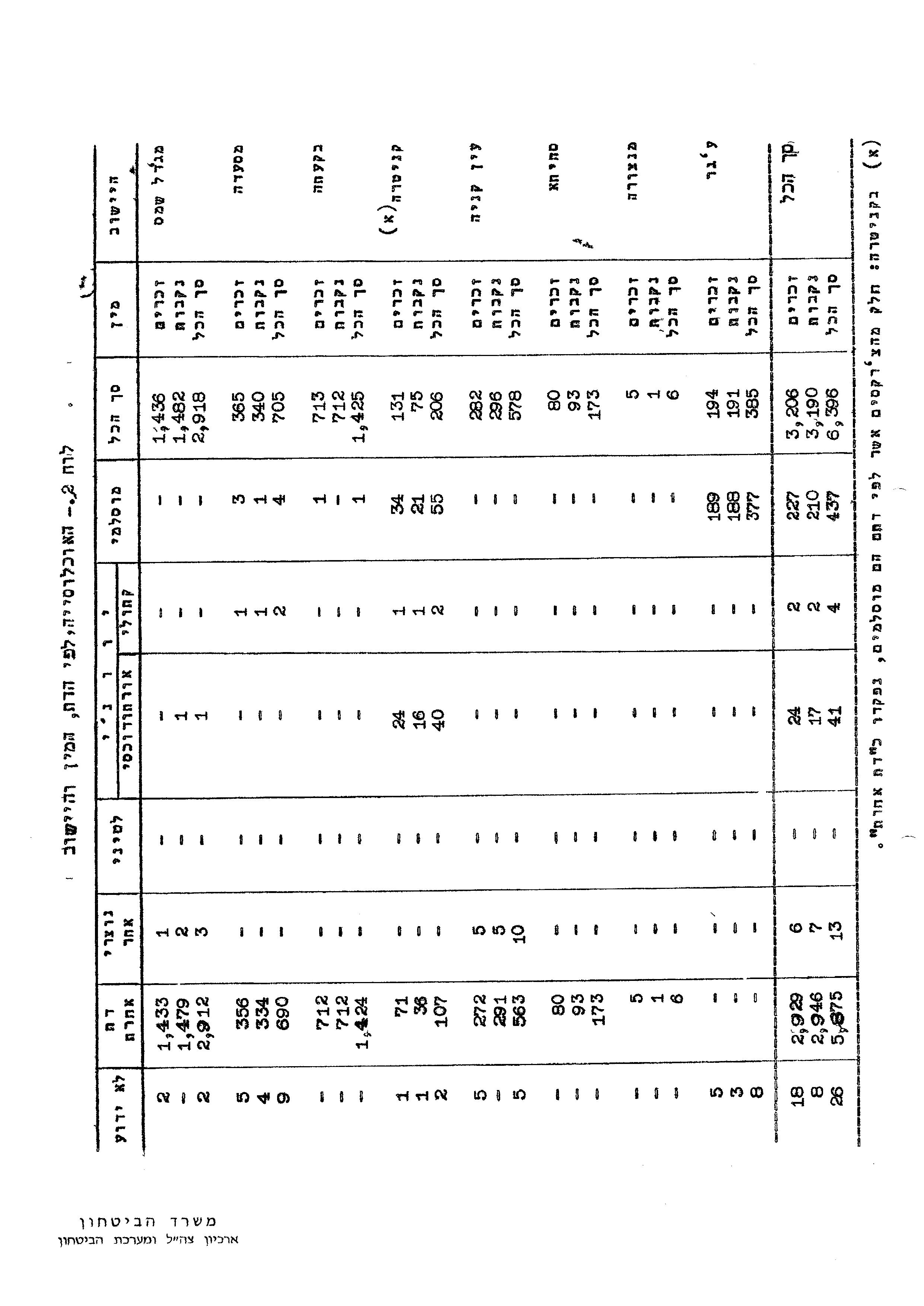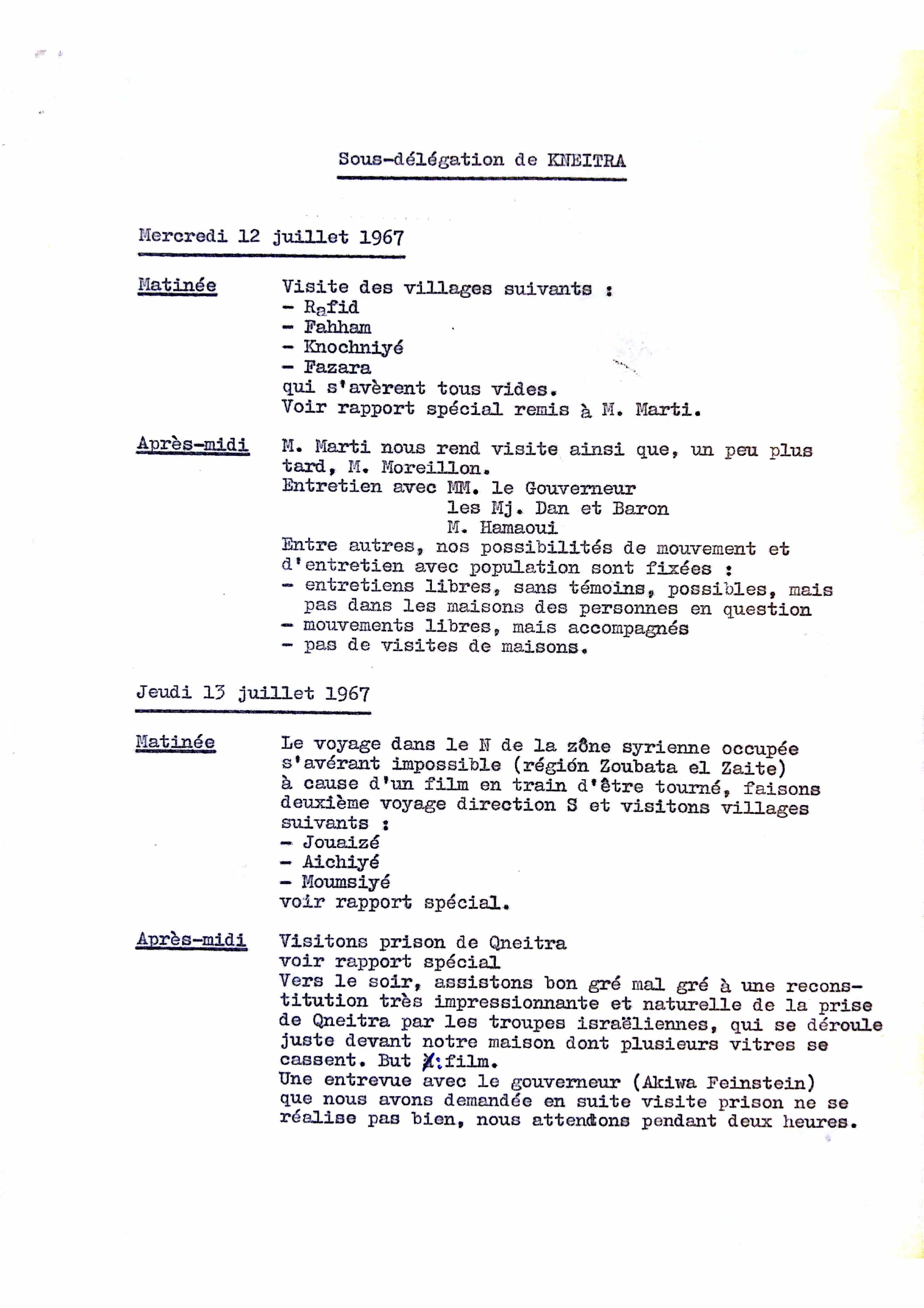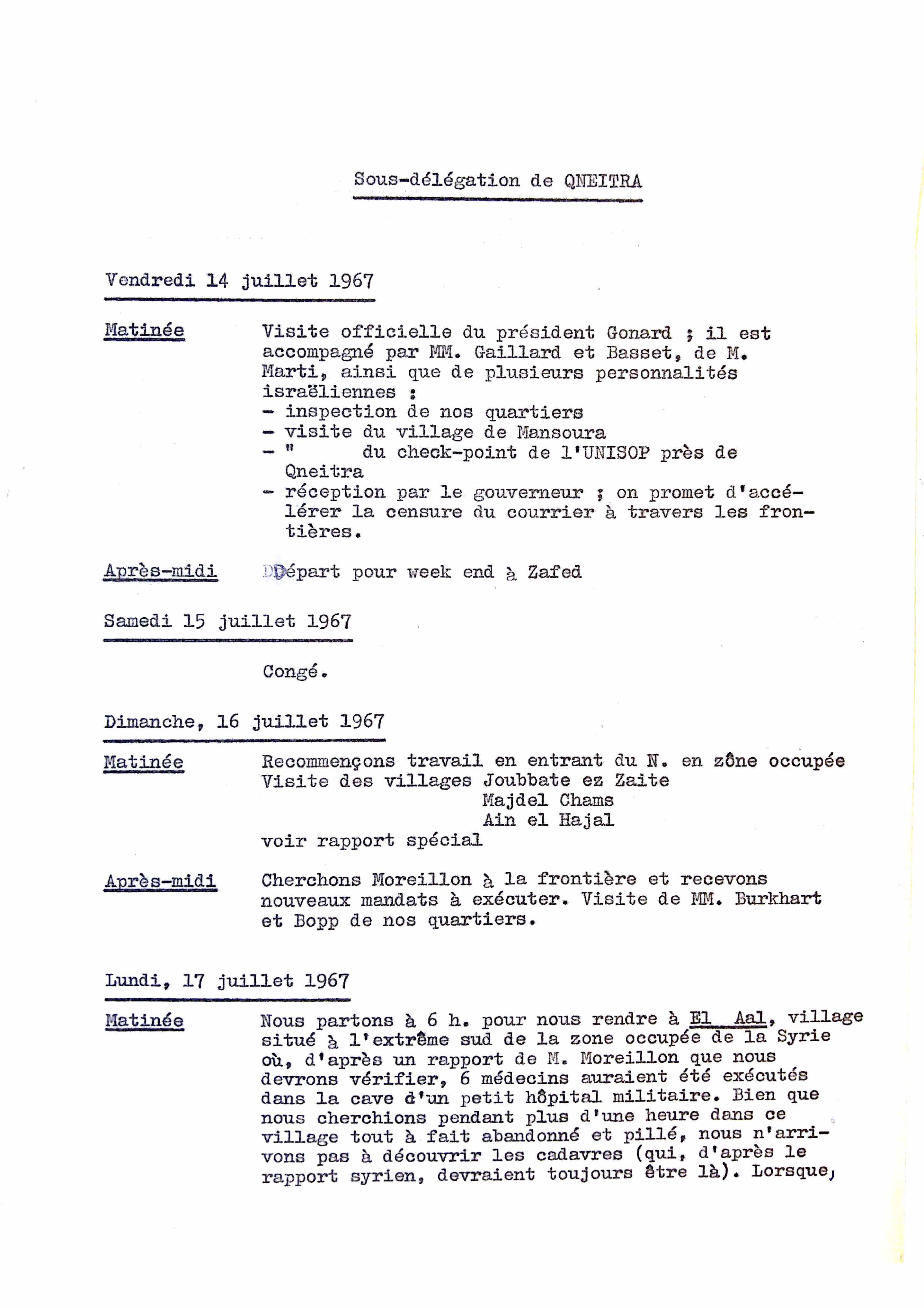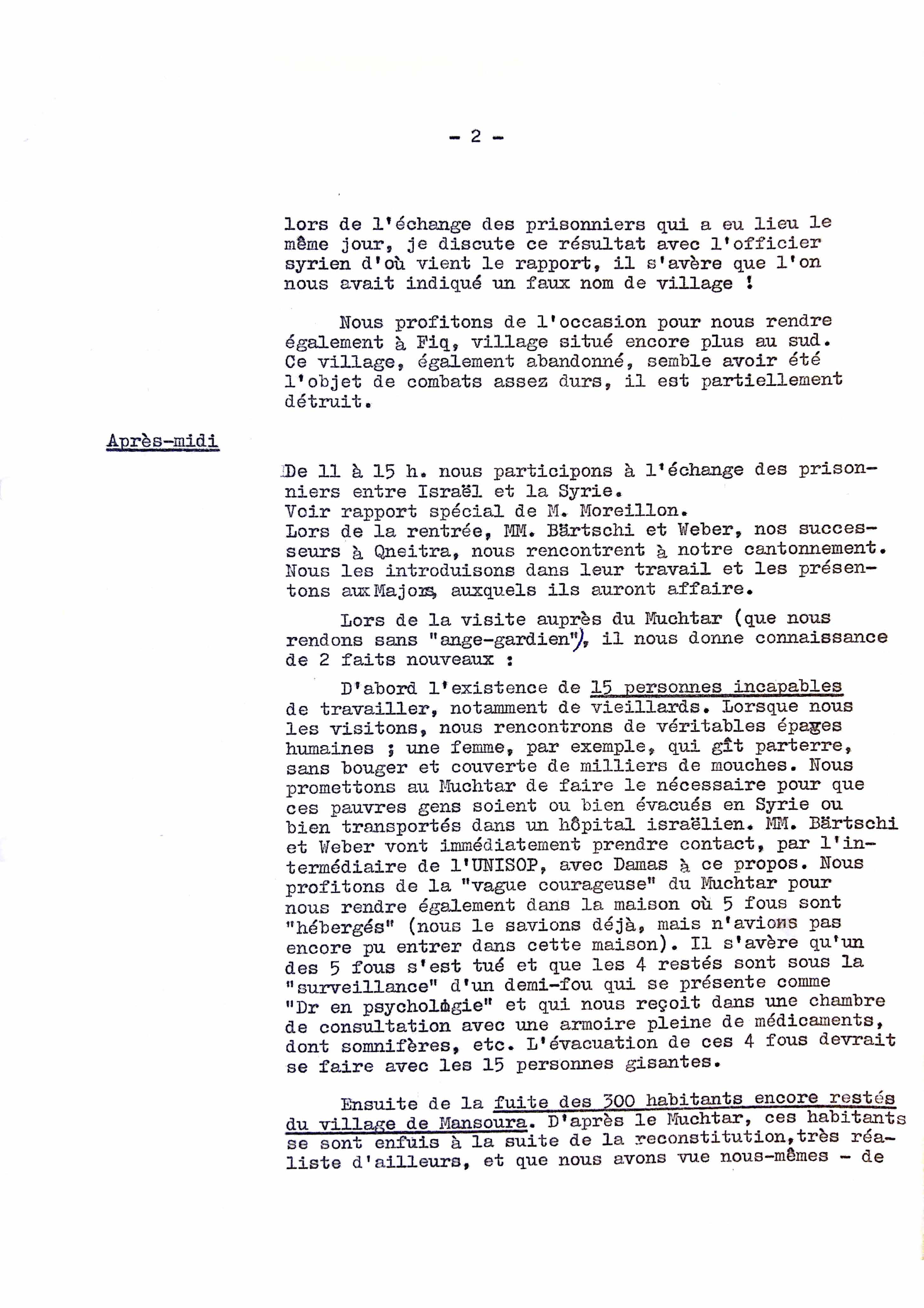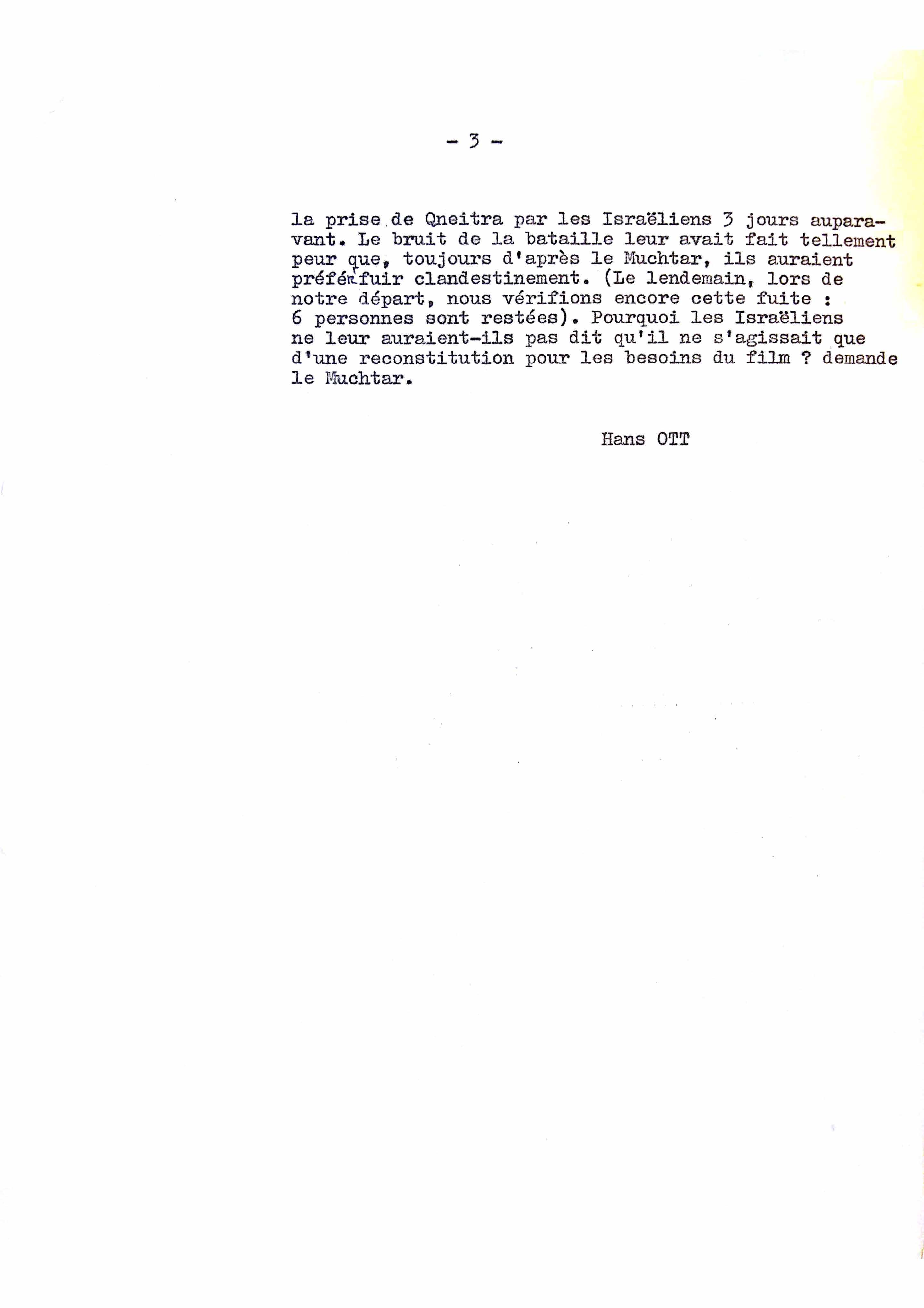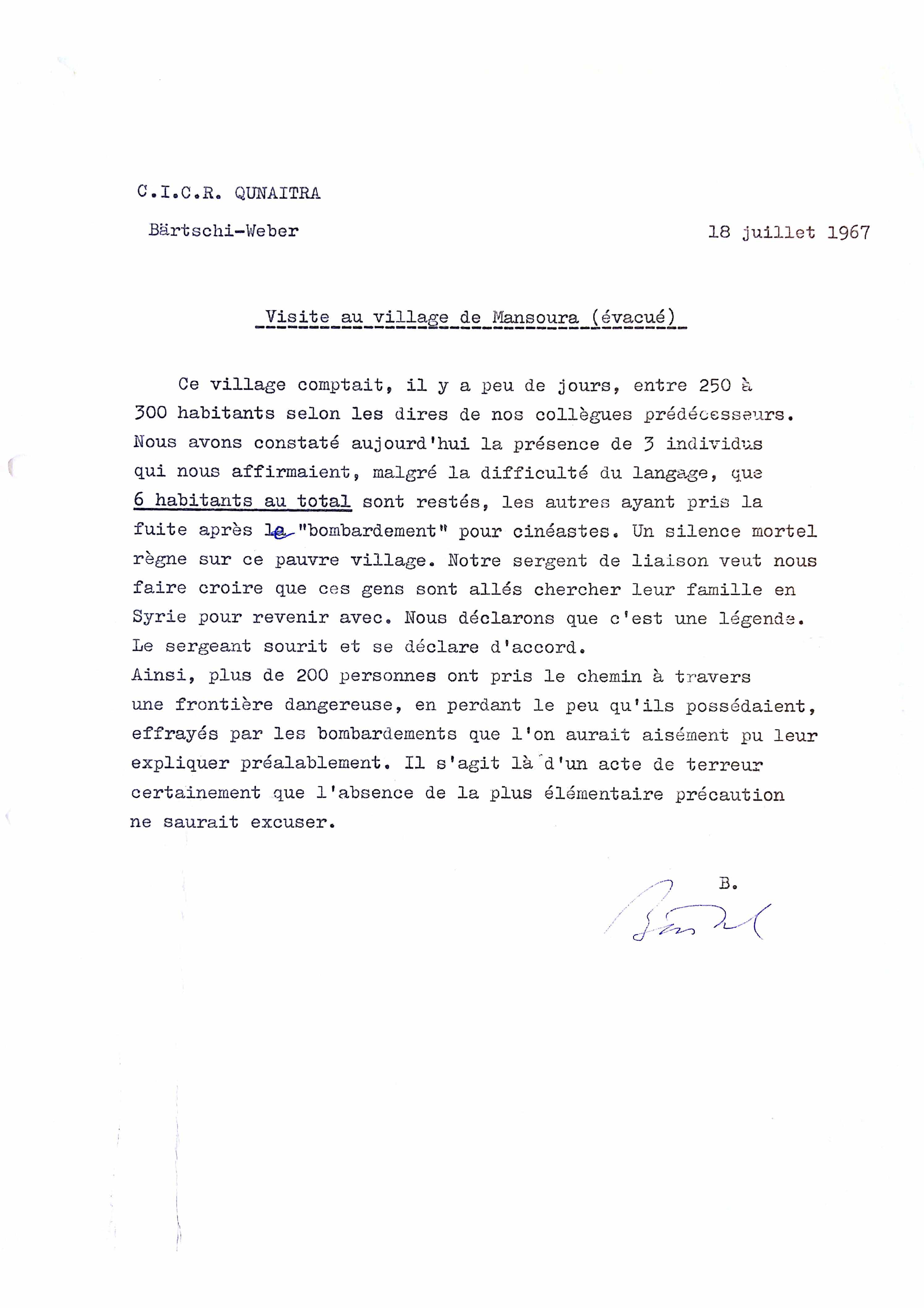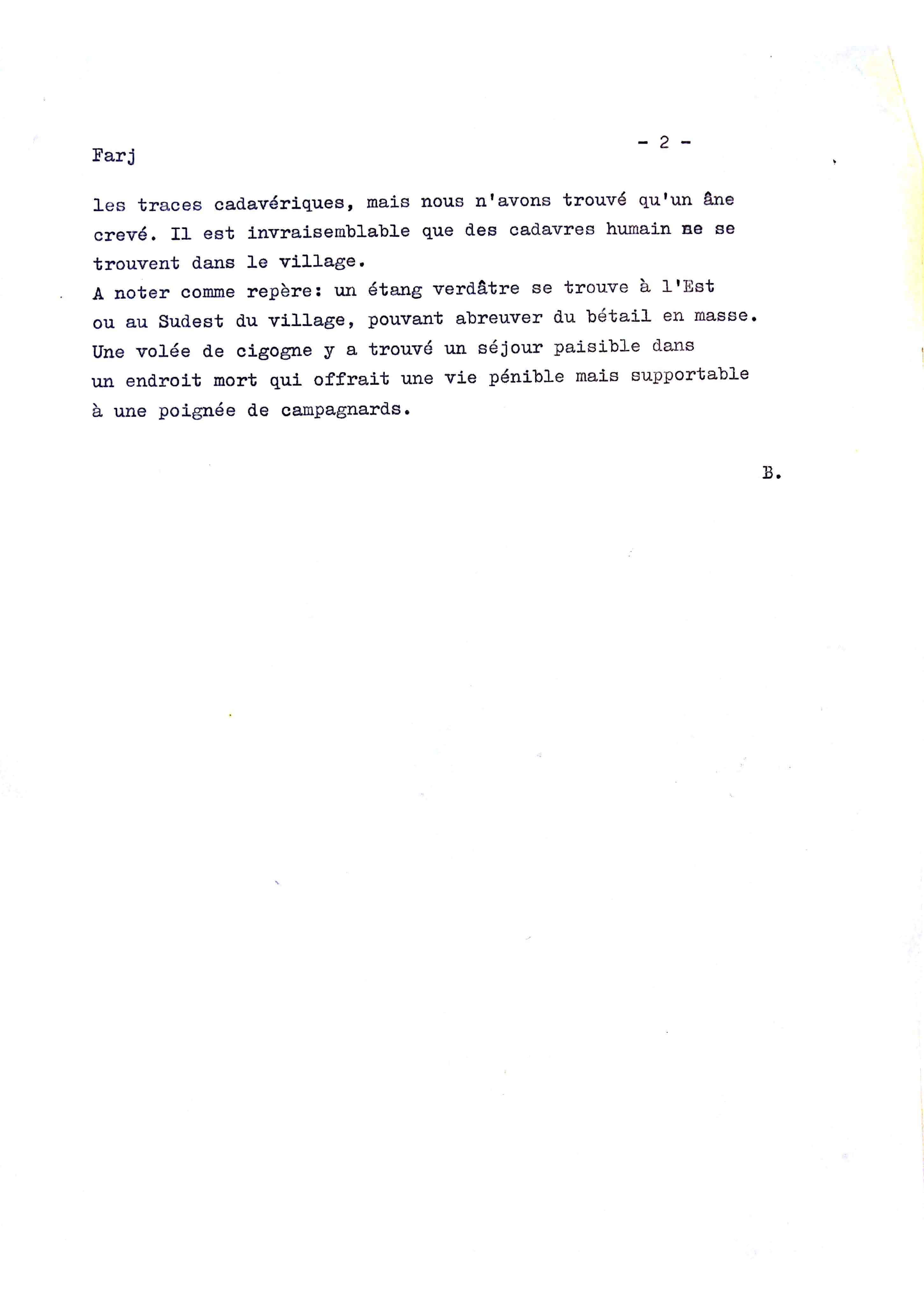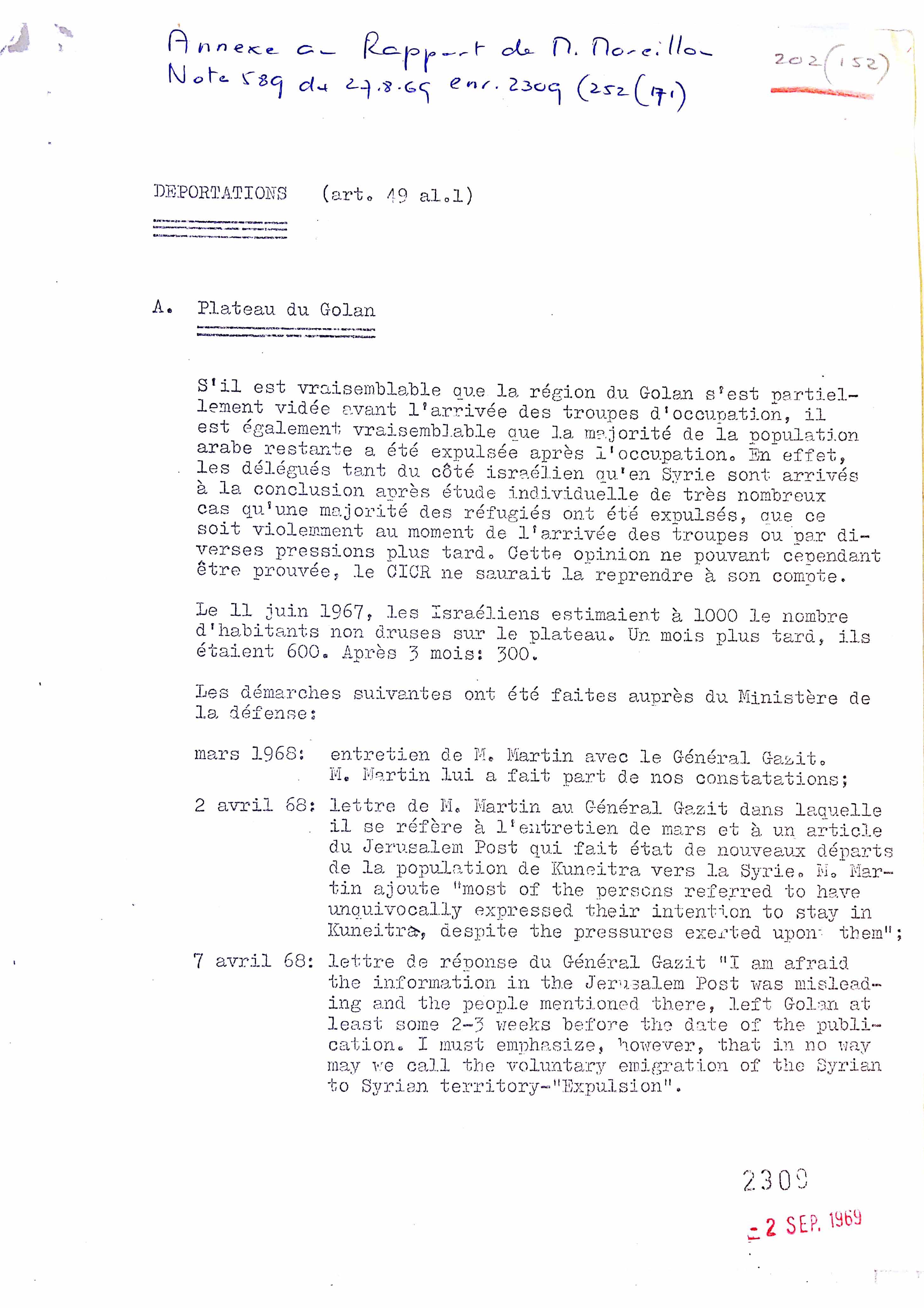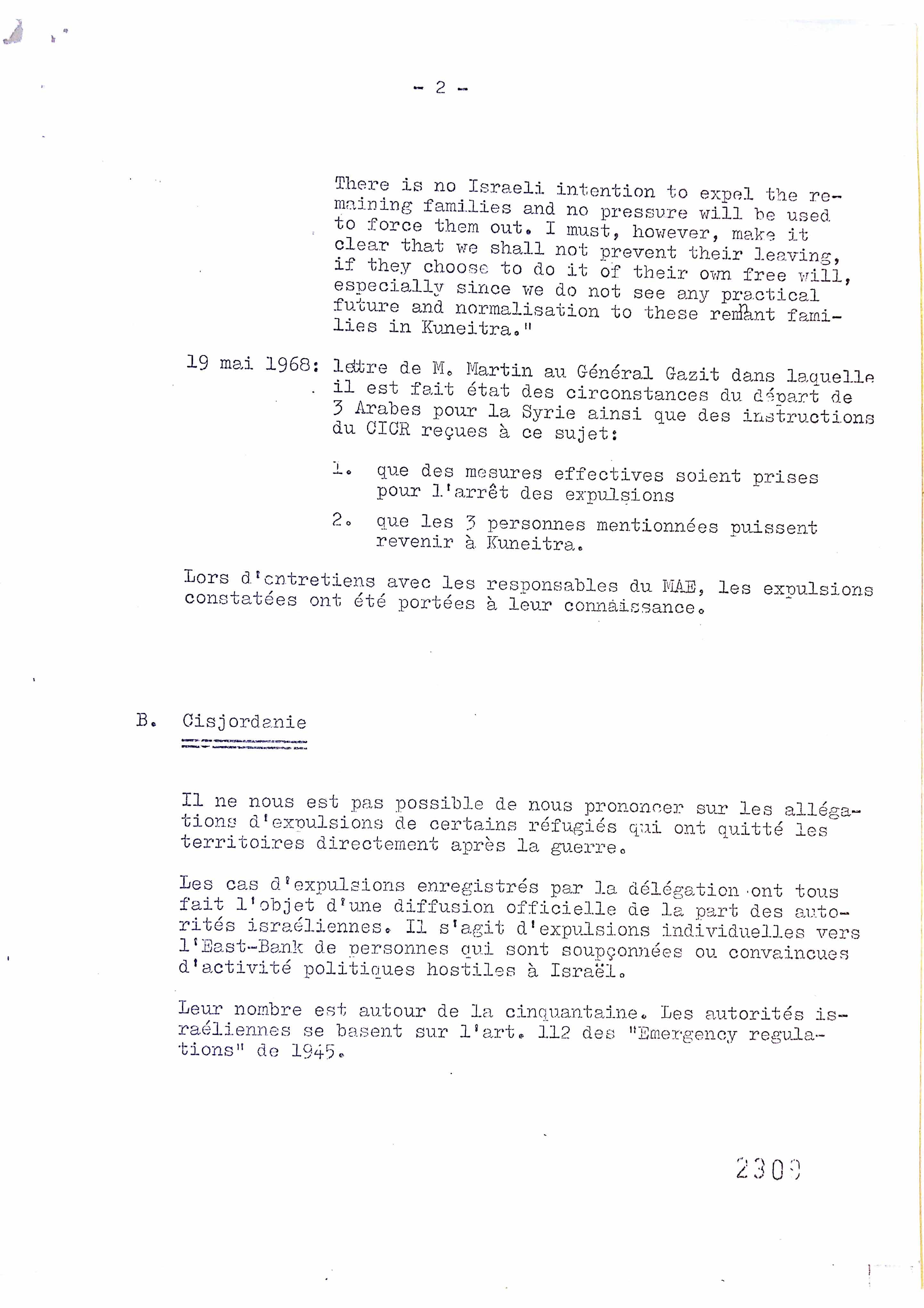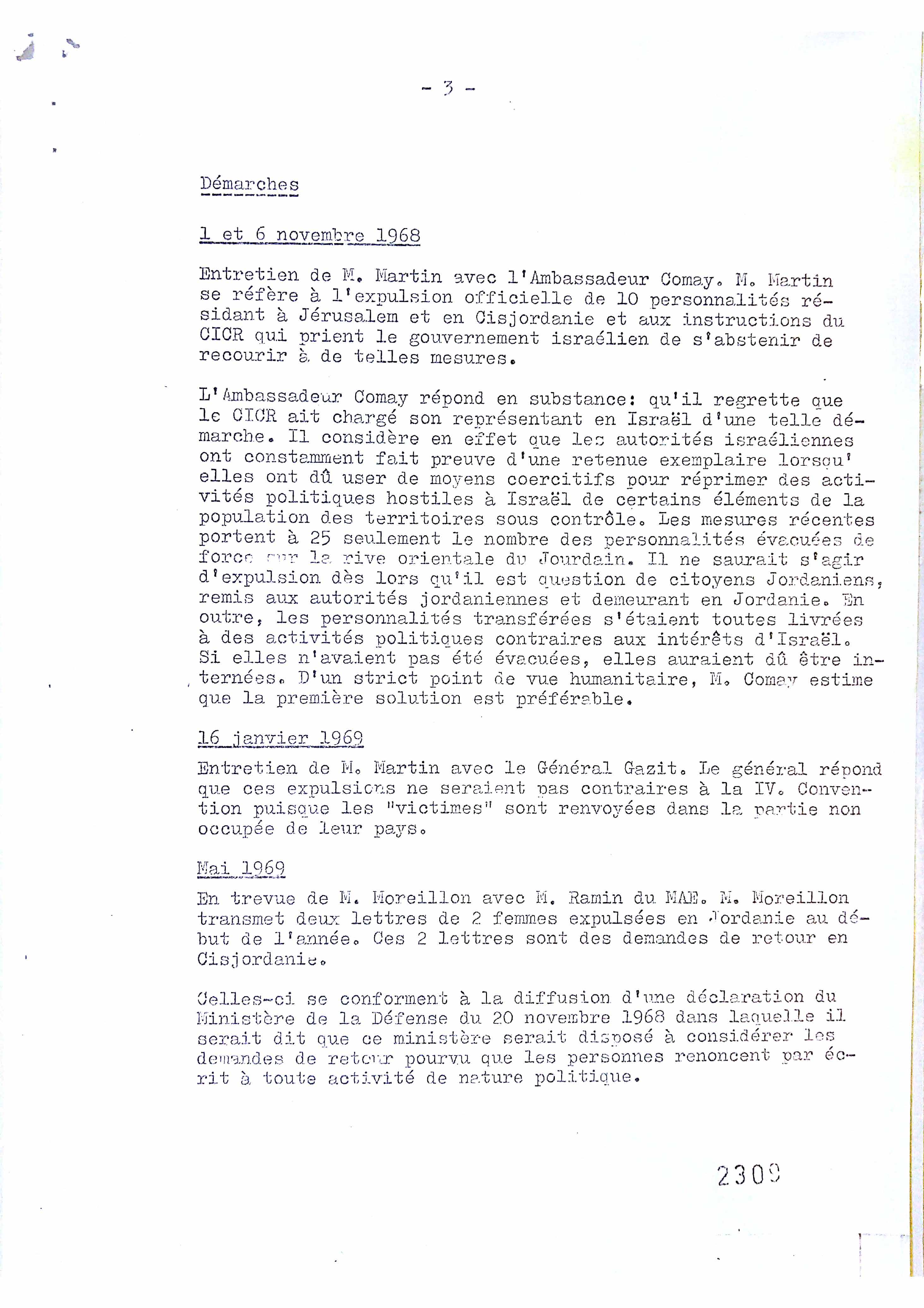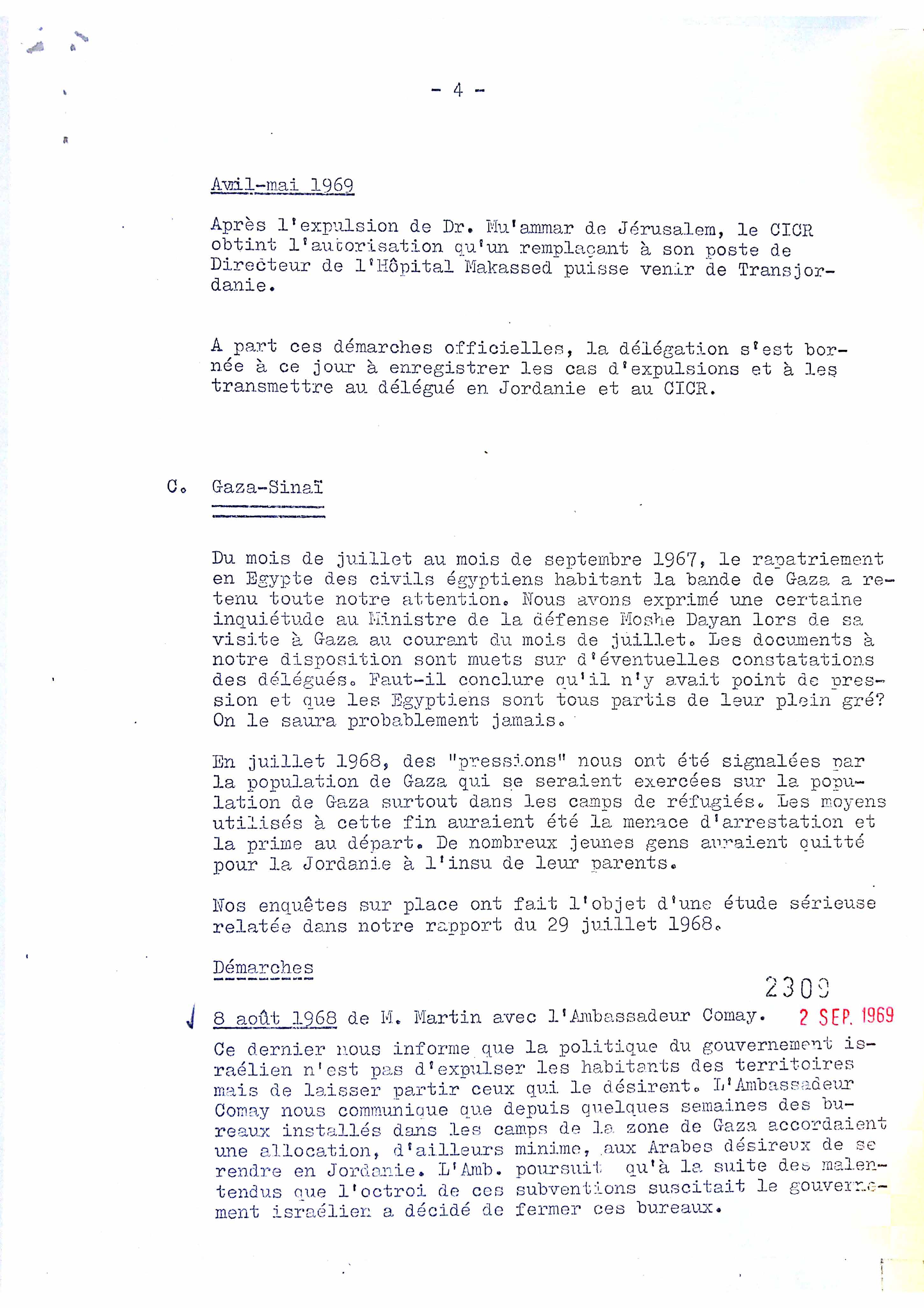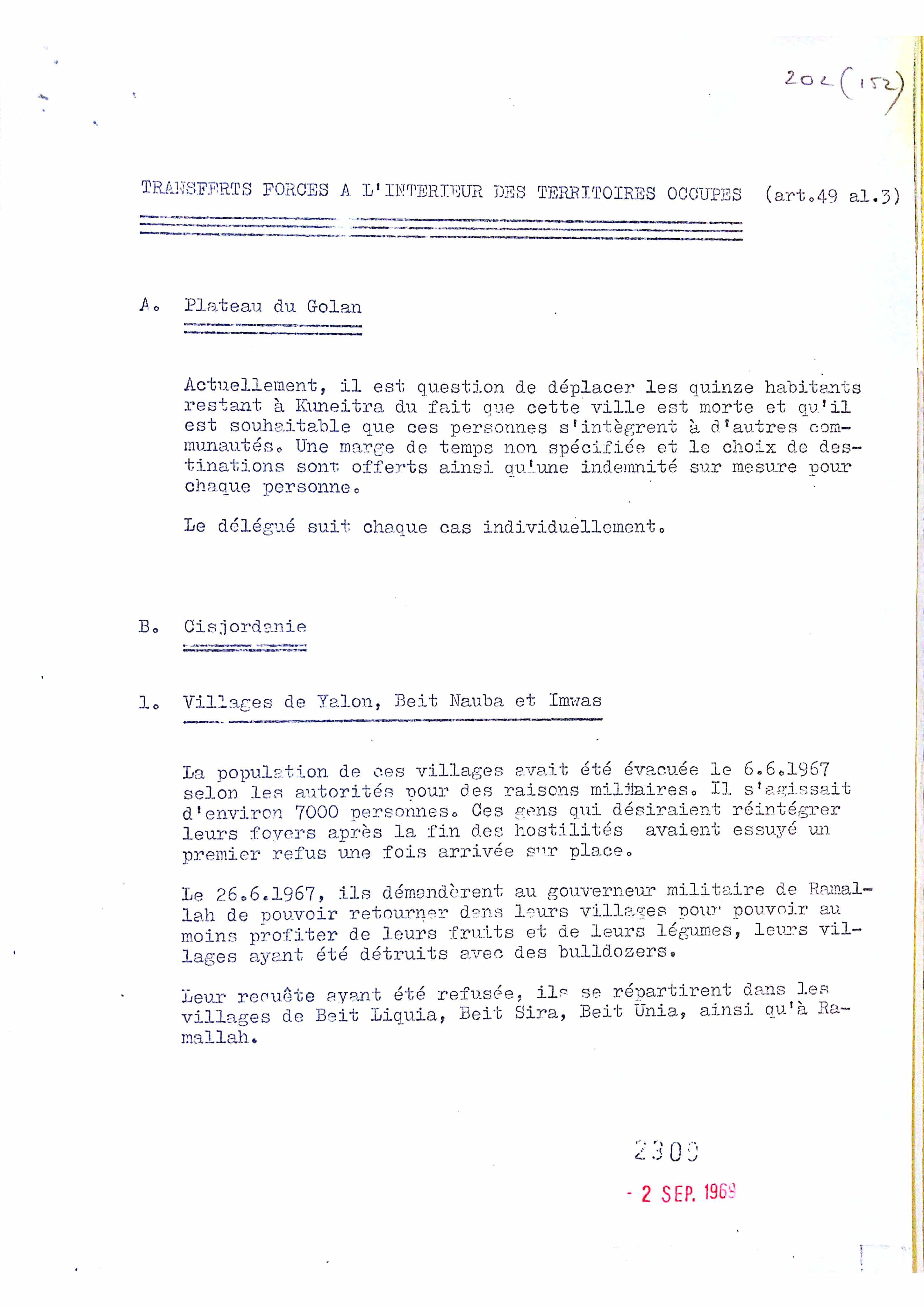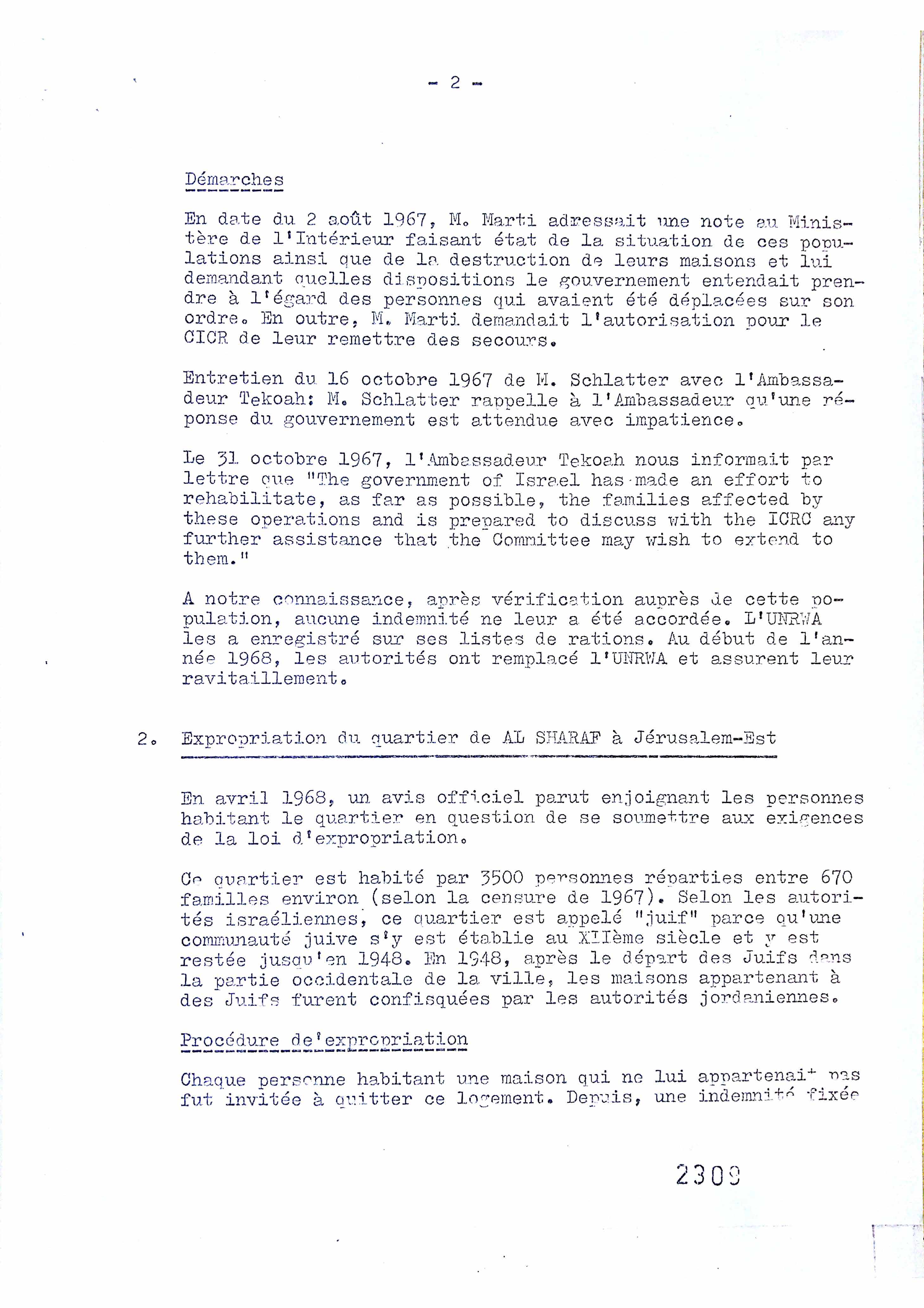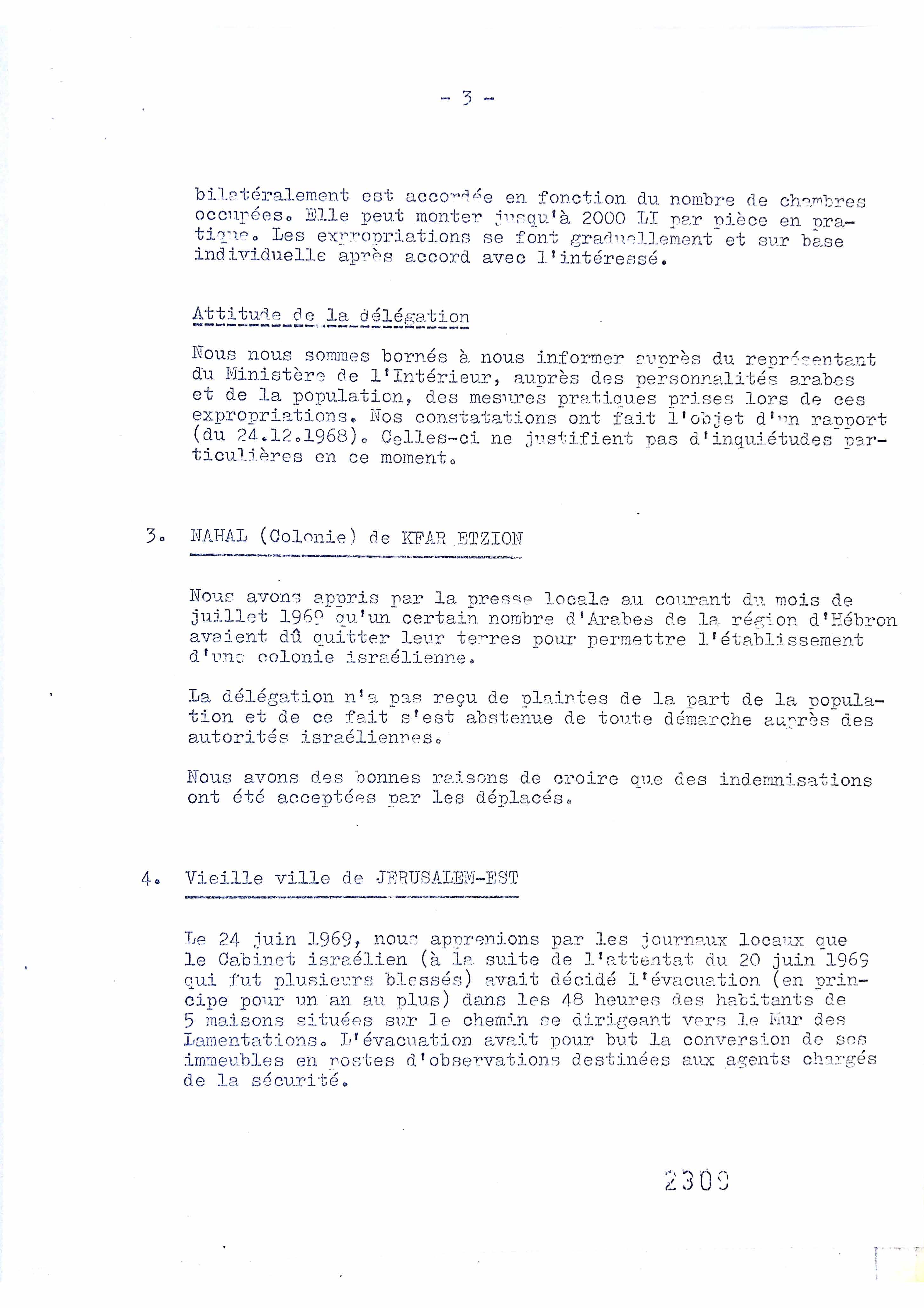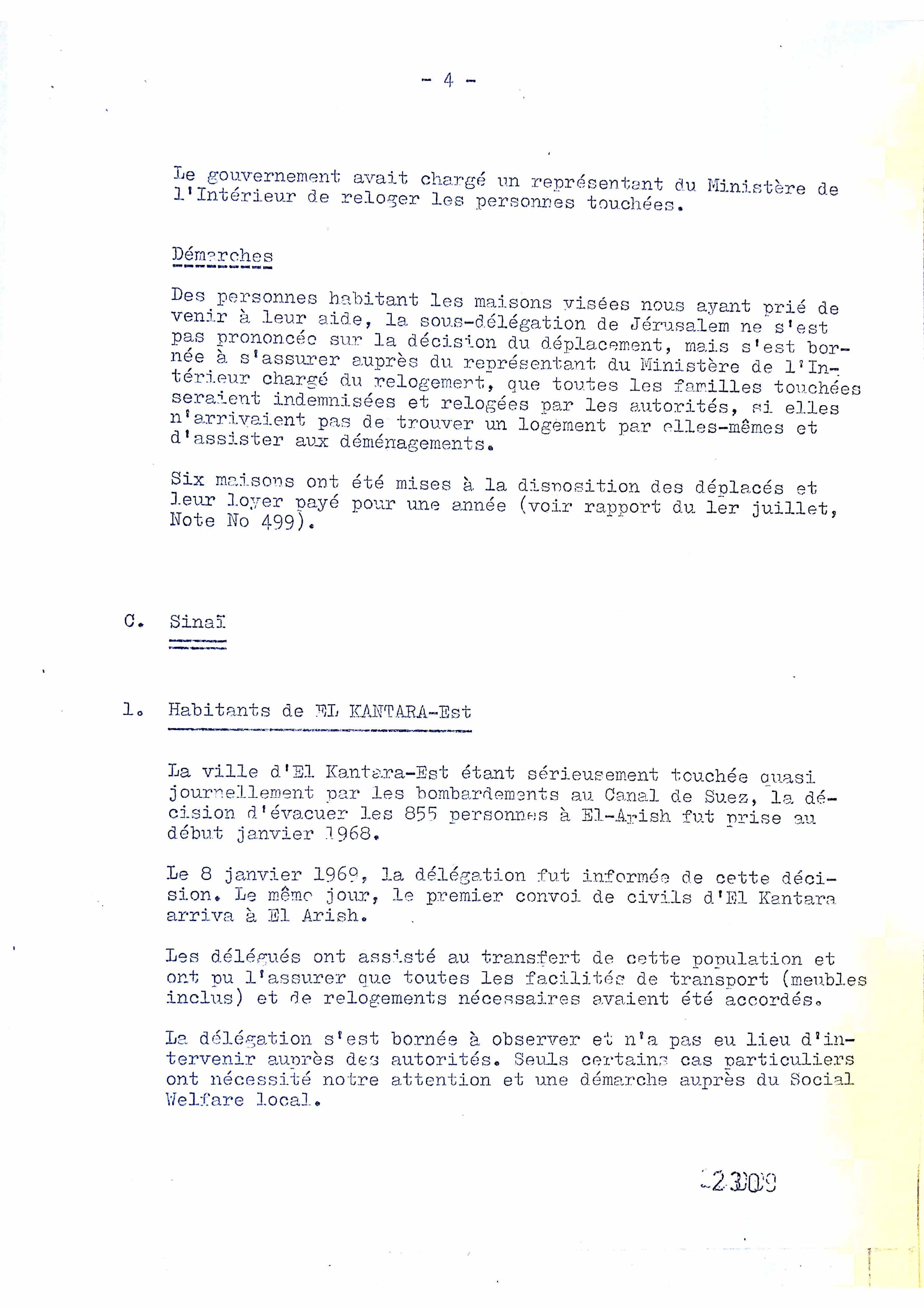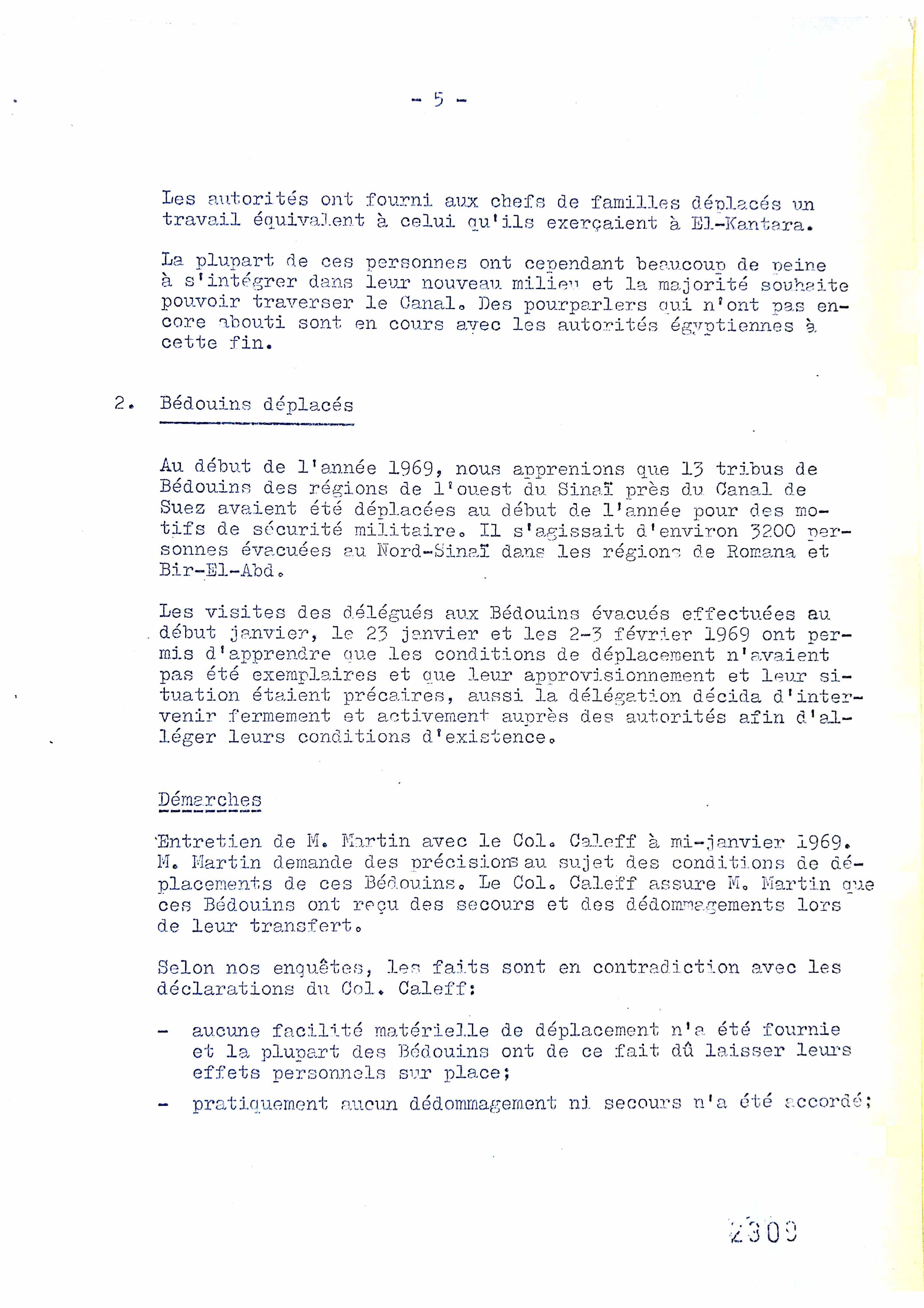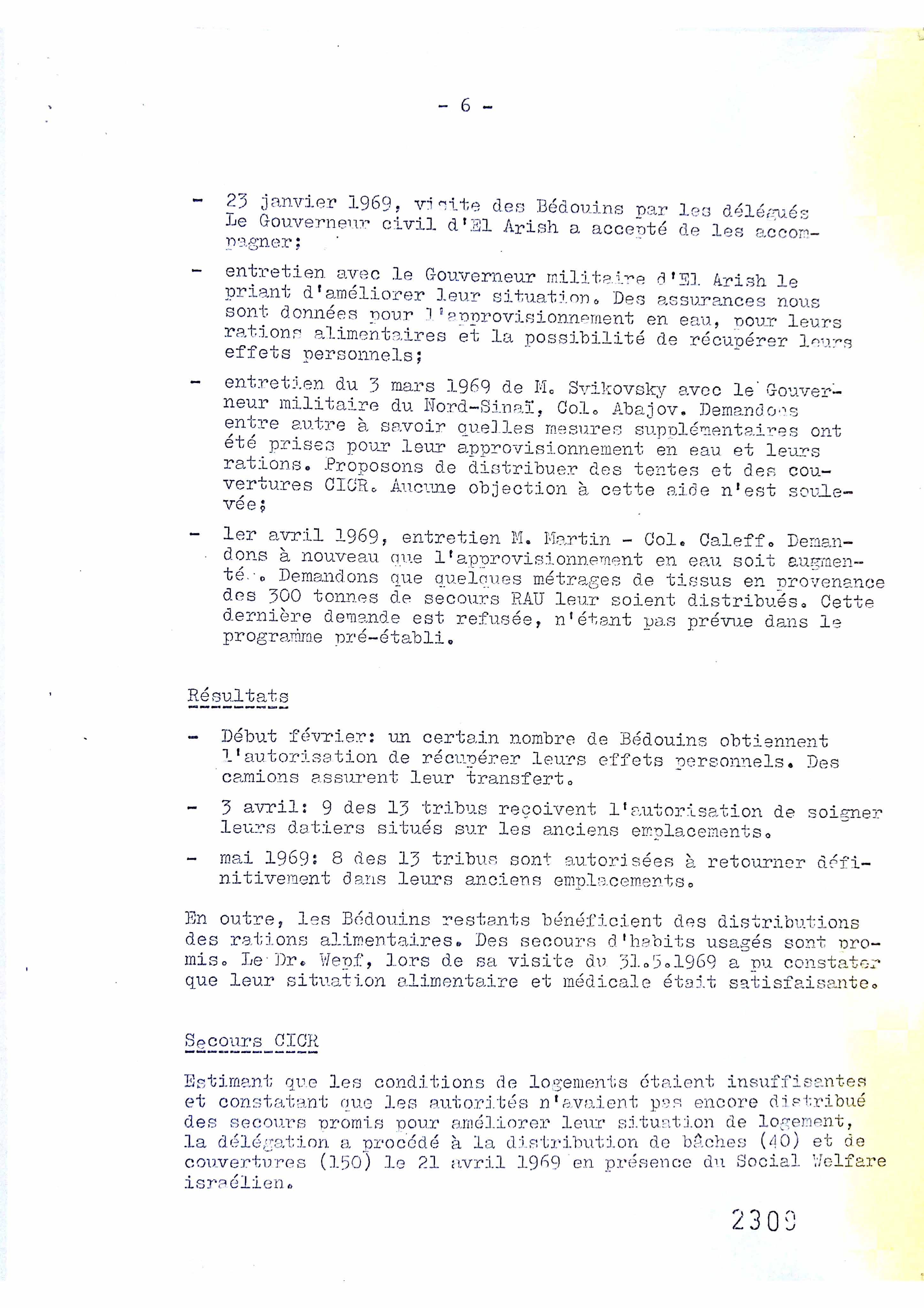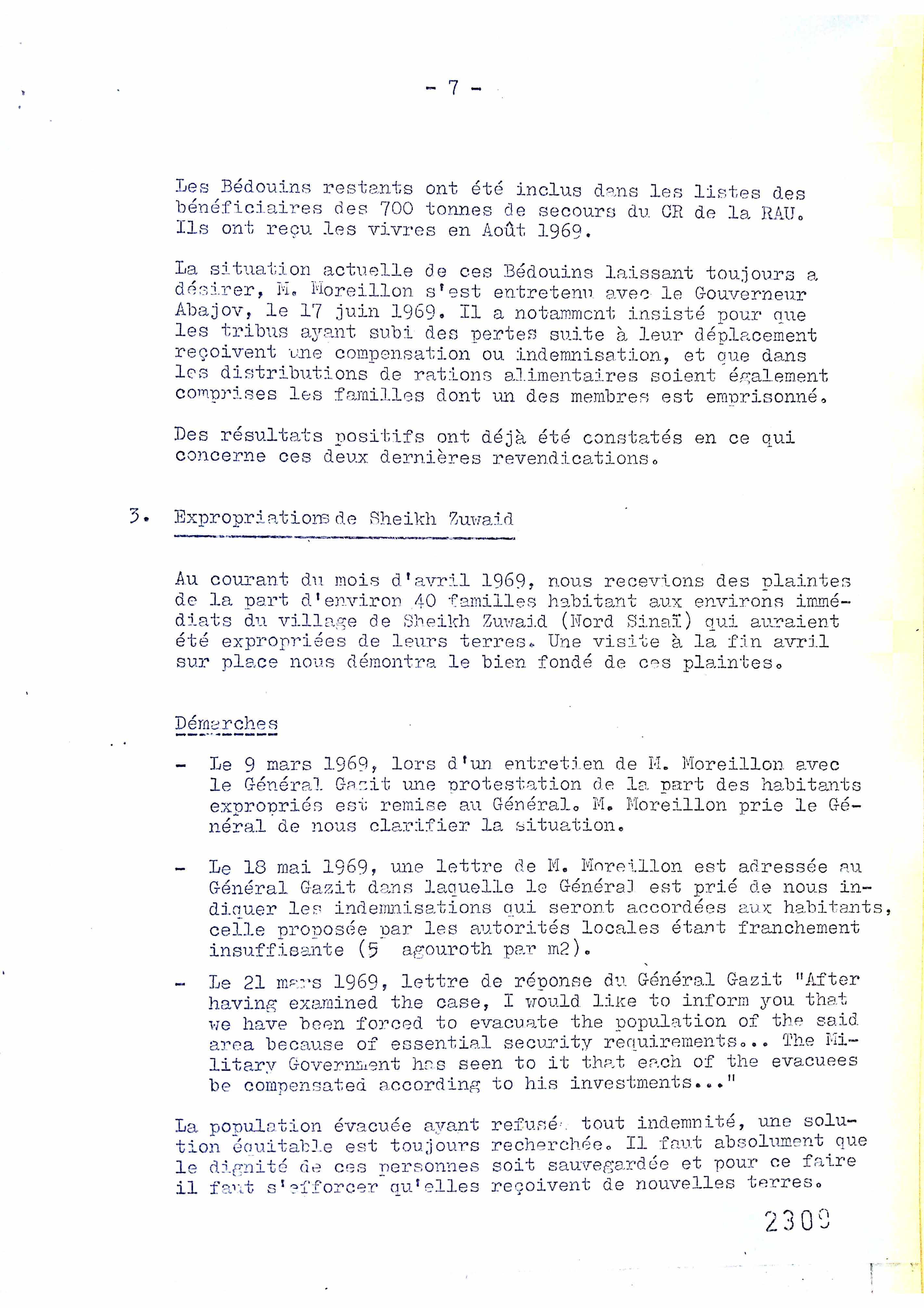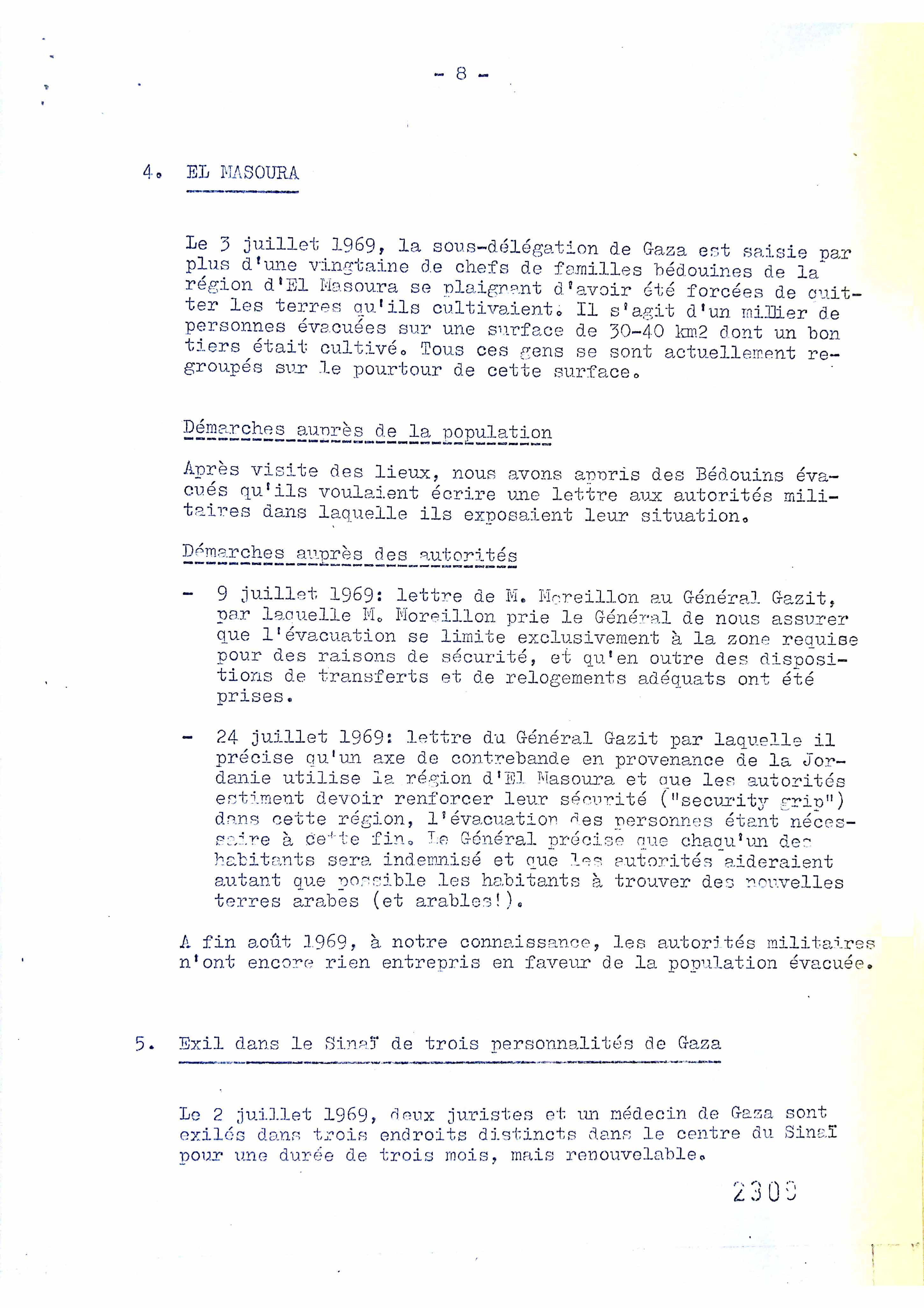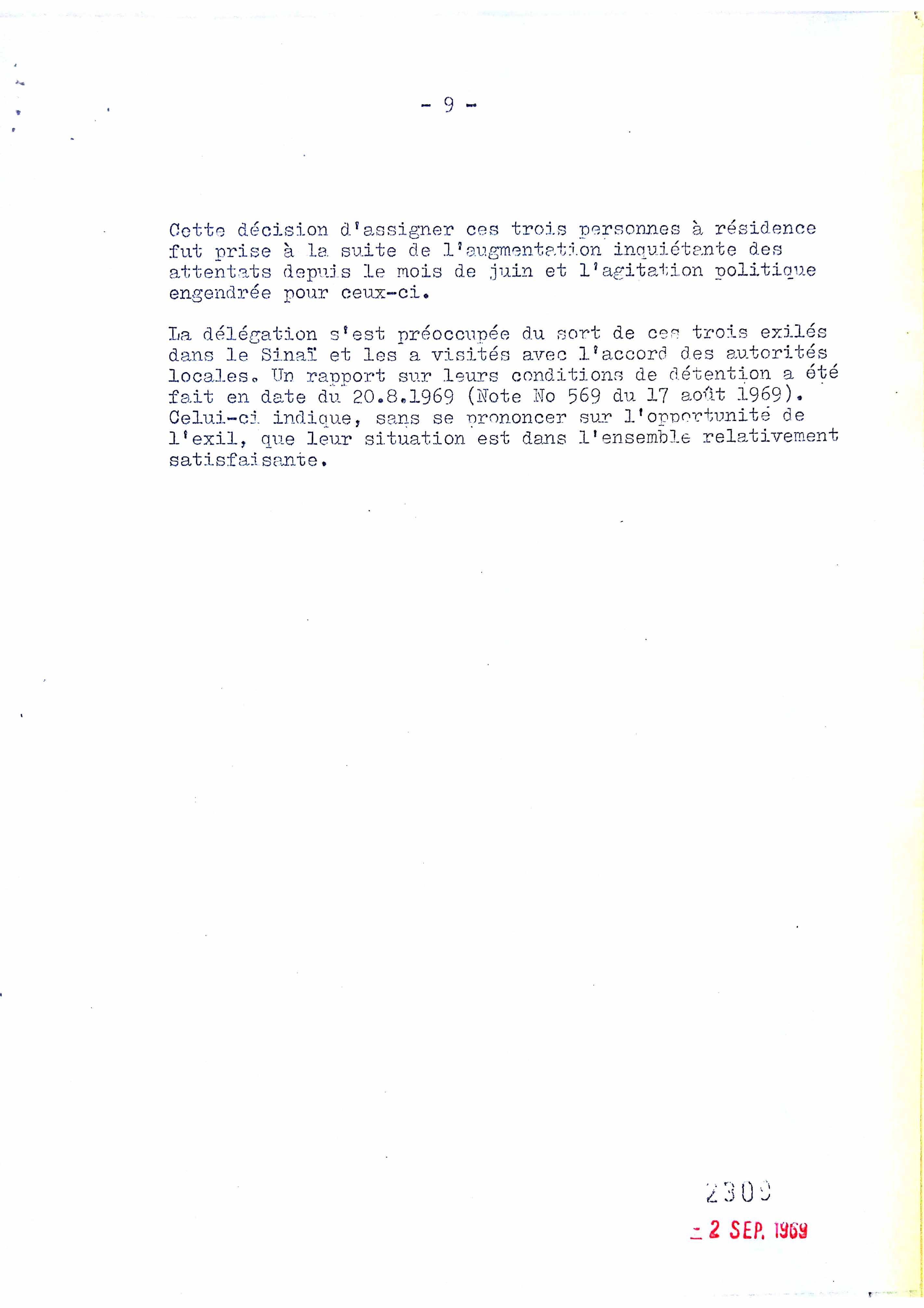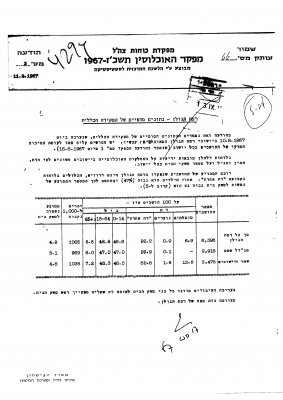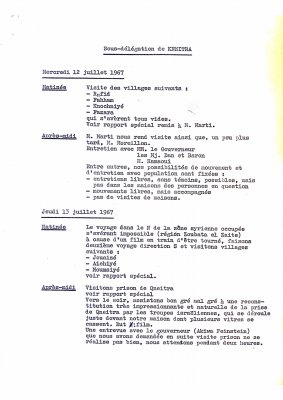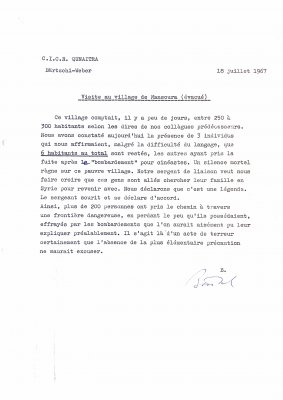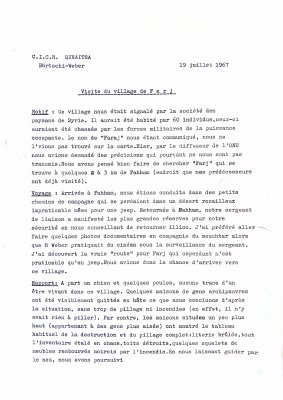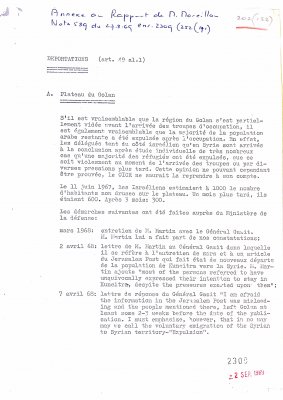Before the Six Day War, about 130,000 people lived in the Syrian Golan Heights. An Israeli census held in August 1967, three months after the war, showed the newly occupied area as having only 6,396 Syrian residents, the vast majority of them Druz. The fate of tens of thousands of Arab residents who lived in the area was quickly erased from public memory. They were largely overlooked in historical research as well. One of the only people to inquire about them was journalist Shay Fogelman, who wrote a story in Haaretz newspaper in 2010 about Israel’s efforts to empty the Golan Heights of its residents. Documents allocated by Akevot Institute at the archives of the International Committee of the Red Cross (ICRC), expose another aspect of the expulsion of Syrian Golan Heights residents.
Golan Heights – final figures of general census
This document summarizes the results of the census Israel administered in the Golan Heights on August 10, 1967. The final analytics show that 3,936 Syrian residents remained in the Golan Heights, the vast majority of them Druze (which the document lists as “other religion”).
In the report of the ICRC delegation in Quneitra for July 12 to 16, 1967, about a month after Israel took over the Golan Heights, delegation members describe their actions and impressions of the situation. The delegation visited several villages to find them empty. Delegates also met with the military governor to discuss the conditions for the delegation’s operations in the area. “We participated, whether we like it or not, in an impressive and very credible reenactment of the seizure of Quneitra by Israeli forces,” ICRC delegation members reported on July 13. “The reenactment took place directly across from the house in which we lived. Many of its windows were shattered. The goal: a film”.
The result was a panicked flight by residents who remained in the area. The Mukhtar of the village asked the ICRC delegation, “Why did the Israelis not notify the residents it was merely a reenactment for the purpose of a film?” In the village of Mansura alone, which is located on the outskirts of Quneitra, about 300 residents who had remained there after the war fled. On July 17, the delegation reported: “These residents fled because of an extremely realistic reenactment, which we saw with our own eyes, of the Israeli takeover of Quneitra three days earlier. The sounds of battle terrified them so much, they decided to flee in secret. The next day, as we left, we corroborated this: six residents remained.” The census held by the Military Government in the Golan Heights on August 10, also listed only six residents in Mansura.
Delegation visit to Mansura (empty)
Following their visit to the empty village of Mansura, ICRC representatives wrote that according to their information, the village had 250 to 300 residents up until several days before the visit. The delegates criticized the “staged shelling,” which prompted residents to flee and said it was an unacceptable act of intimidation. The village was “deathly quiet,” they said. An IDF official who routinely escorted ICRC tours “tried to make us believe the residents left to look for relatives in Syria and bring them back,” the ICRC delegates wrote. However, neither party believed this explanation. The delegates wrote they told the Israeli escort it was a “fairytale” and that he, in response, “smiled in agreement.” The hundreds of residents who fled because of the filming never returned to their homes.
Visit in Farj
In the early months of the occupation, Israel engaged in efforts to clear the Golan Heights of its Arab residents, particularly Sunni Muslims. Since it was decided to let the Druze remain, they fared much better. In other still populated villages, Israel took resolute action to expel the residents. So, for instance, a report of the ICRC delegation visit to the village of Farj on July 19, states the village was found to have been abandoned with no sign of the 60 people who had lived in it. Delegation members also noted the IDF made it difficult for them to access the village. Finally, when one of the delegates made it to the village, he described a hastily deserted village with houses that were looted and destroyed. Other houses were burnt to the ground with the belongings of the occupants still inside.
Deportations – Golan Heights
This document is an annex to the letter summarizing the ICRC’s response to expulsions of Golan Heights, West Bank, and Gaza Strip residents. With respect to the Golan Heights, the ICRC delegation concluded that the IDF had systematically expelled residents of the area and that most of those who remained after the war were relocated. The document notes that on June 11, 1967, Israel reported 1,000 non-Druze residents in the Golan Heights. Two months later, it reported 600 residents and another month after that, only 300 residents. A thorough examination by ICRC delegates in Israel and Syria revealed that, “most of the refugees were expelled either violently upon arrival of the armed forces, or under duress at a later stage.” Colonel Shlomo Gazit, Chair of the Committee for Political-Security Coordination in the Territories, offered an explanation when he met with the ICRC to discuss the expulsion, among other things. Col. Gazit said the departure of Syrians back to Syria should not be seen as an expulsion. Israel reacted similarly to charges it had expelled Palestinians from the West Bank to Jordan after the war.

